I am trying to establish if this buzzer circuit going to perform as expected
MPU: STM32 running at 3.3V, input will be coming from a GPIO pin that has a timer channel on it
Buzzer: A passive magnetic buzzer, 5V rated, similar to this
U4: An AO3400A MOSFET, datasheet
D2: SM4007PL diode
Can you see any issues that would cause MOSFET to not open, or impact operation negatively by any other means?
